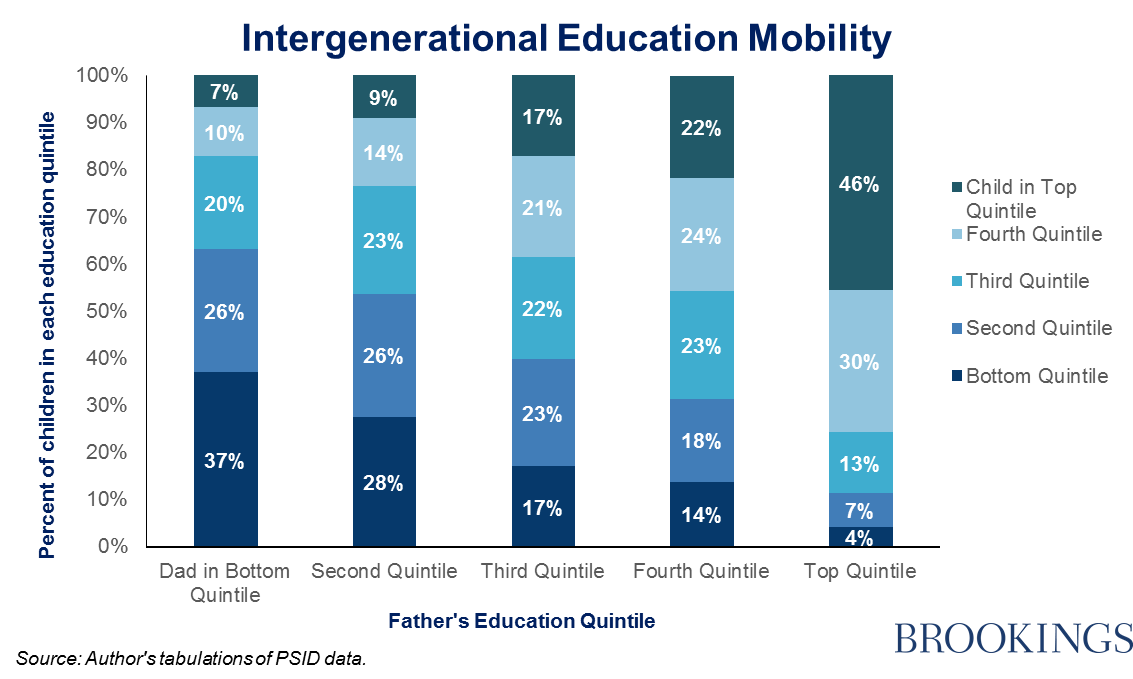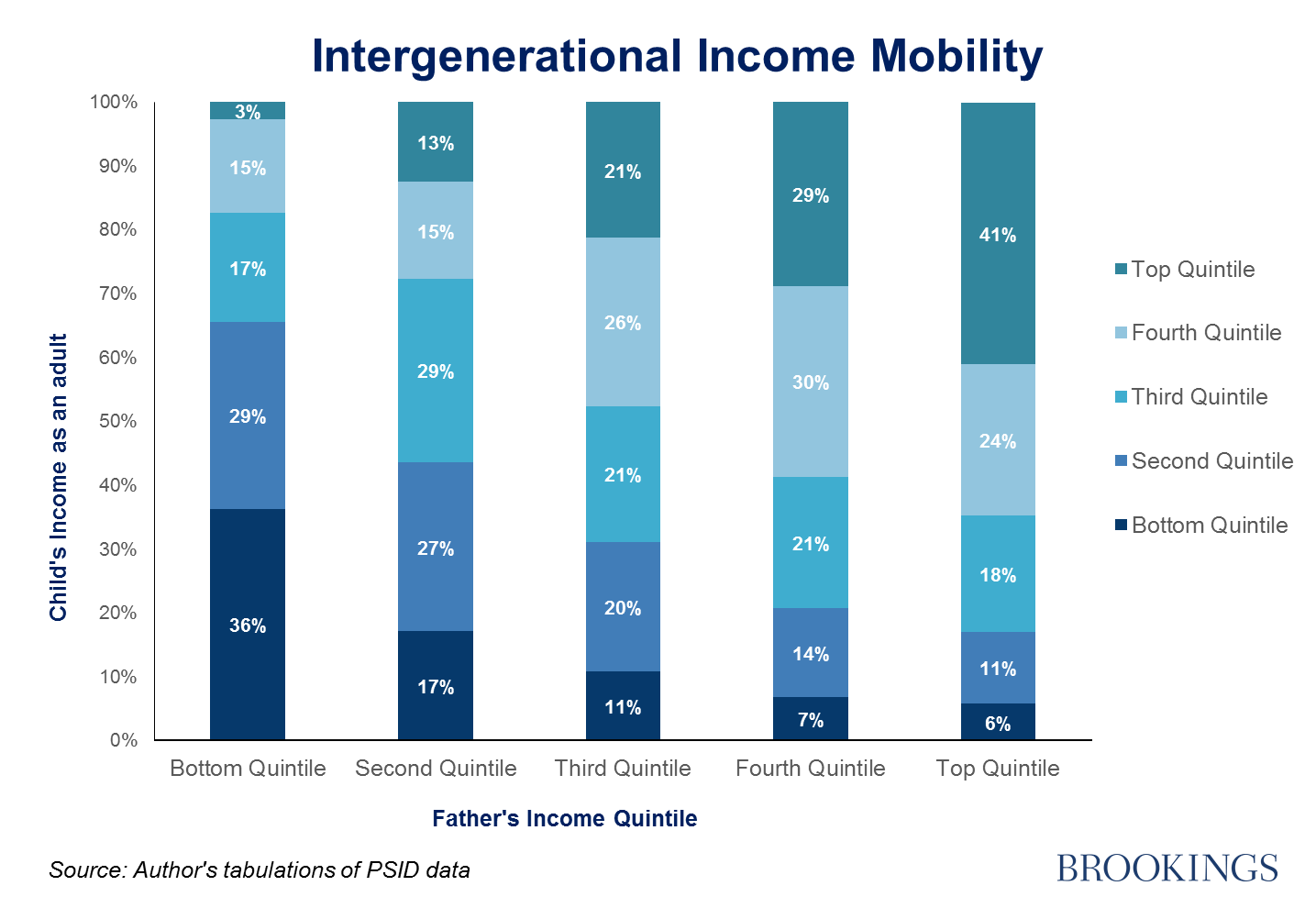Is A Good Education Inherited From Your Parents?
By:
Many view education as "the great equalizer" in America - a gateway to a better life and a bigger paycheck. That's true in the sense that individuals with a college degree earn roughly $1 million more than those with a high school diploma over the course of their lifetime and 73% of Americans agree that getting a certification or degree after high school is essential for securing a good job. But just because a higher education is a means to a more prosperous life does not mean that everyone has access to it.
As it turns out, children of college graduates are far more likely to earn a degree as well, which makes sense: parents who have reaped the benefits of graduating college will encourage their children to do the same. But if our students' college graduation rate is so closely associated to parents' academic records, we're immediately faced with a challenging and dangerous cycle of economic immobility and income inequality.
In this Brookings Institute chart on educational attainment, the 'Top Quintile' for fathers denotes more than 14 years of education (equivalent to earning an associate's degree or above). The 'Top Quintile' for the child means more than 16 years of education (equal to a bachelor's degree or above). According to the chart, among the best-educated ('Top Quintile') fathers, 76% of their children attained either 'Top Quintile' or 'Fourth Quintile' status. Meanwhile, only 17% of children with fathers in the bottom quintile could say the same.

These findings mirrored the institute's intergenerational economic mobility statistics:

The ties between education and wealth are alarming and yet, sadly, make sense, since they are inextricably linked. As much as we like to think of education as an equalizer, the quality of education and quantity of educational resources depends greatly on a school district and neighborhood's wealth.
Capital New York's statewide analysis revealed that while 64% of teachers in wealthy districts earned the highest rating of "highly effective," only 38% of teachers in poor lower income districts earned the same. In fact, 12% of teachers in these poorer districts earned the lower ratings of "ineffective" or "developing," compared to 1% of teachers in affluent areas. While teacher ratings are subjective - based 60% on classroom observations, and 40% on local and state tests (which are notoriously inaccurate at predicting a student's success) - the disparity between the two groups of teachers still raises eyebrows, especially considering that data collected by the U.S. Department of Education shows that teachers in wealthy school districts are more likely to have received a master's degree or higher than in districts where most students qualify for free or reduced-price lunches.
But why wouldn't better teachers choose to teach at "better" (ie. wealthier) schools? After all, these schools often pay their teachers higher salaries and higher pensions and have access to more educational resources. For instance, the U.S. Department of Education found that on average, public education expenditure per student in the nation's poorest communities is $4,375, compared to $6,827 in the nation's richest communities.A review of 2009-10 data in New York City found that none of the city's highest-performing schools were located in the city's poorest neighborhoods of Harlem, the South Bronx and central Brooklyn. Even worse, last year it was reported that New York's richest schools spend 80% more than their poorer counterparts.
With this poverty-resources gap, it's no wonder that a study from the University of Michigan showed that the imbalance between rich and poor children completing college has grown by roughly 50 percent since the later 1980s. And while some may be quick to blame that on standardized tests, that is not the case - while 82% of affluent students with SAT scores over 1200 graduate from college, only 44% of lower-income students with the same scores do.
To learn more about the SATS are unfair, click here.
To break the cycle, we must level the playing field for all students from the first days in our school system by making sure that each state's resources are going towards those that need them most.
The Obama administration is taking the first steps by directing states to ensure that there is equity in assigning teachers to school districts. However, until we eliminate (or at least greatly reduce) the poverty-resources gap so that students in lower-income neighborhoods receive equally high-quality educational opportunities, the cycle will continue and compound as new generations of college graduates disproportionately raise college-bound children.
